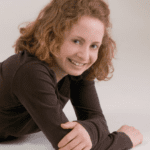Embodied Yoga: 3 Ways to “Listen To Your Body” in Yoga

Article At A Glance
“Listen to your body.” If you practice yoga with any kind of regularity or are even tuned into the modern wellness movement in any way, I’d be willing to bet that you’ve heard this before. Between the lines of that four-word statement, yoga instructors are (by and large) encouraging you to be more embodied. But what is embodied yoga? What does it feel like? And how do we experience it? Beyond a more fulfilling and beneficial yoga practice, why should it be something that we work toward, in the wider scope of our lives beyond the mat?
Embodiment can confer myriad holistic health benefits, including, but not limited to, better mood, body image [1], digestive health, and sleep. Research has demonstrated that it can also guide us to more attuned self-care and even help to address challenging conditions such as autoimmune and eating disorders [2]. Beyond that, connecting more deeply with ourselves with embodiment can actually allow us to connect with the world outside of our skin in more fruitful and soul-nourishing ways.

The Perils of Disembodiment
Disembodiment, on the other hand, can lead us to behaviors that can be great for corporate bottom lines. But they may not be so good for us as whole humans (body, mind and spirit). For example, media and pop-culture binging, overeating, abusing alcohol and other substances can come from a lack of body awareness.
In fact, that commercially driven behavior is among the forces in modern culture that have led us away from embodiment. In that respect, it gets along well with perfectionism, workism, and individualism. As such, experiencing embodiment can actually be scary. In cases of trauma, disembodiment can even be a survival tactic. Embodiment doesn’t necessarily come all that naturally to us as creatures of the 21st century.
How to Practice Embodied Yoga
Your yoga instructor most likely has all of the best intentions when they say “listen to your body.” But sometimes that’s wholly insufficient for leading us to true embodiment. Let’s look at a few approaches that can lead us closer and then deeper, to connect inward so that we can truly connect outward [3, 4].
1. Embodied Yoga Through the Breath: A Friend, Reporter, and Teacher

The breath does a lot for us. It’s a true friend, I’d argue. Except in cases of significant respiratory issues, the breath is always fully there for us, even when we forget about it. Even if it’s been some time since we’ve connected with it, we can pick right back up where we left off. The breath is a reporter, letting us know what’s going on in our minds and bodies if we know how to interpret the information it’s giving us. In the same way, it’s a teacher. It has a lot to teach us about our present condition and what we need to do to take care of ourselves.
As we flow through yoga postures or remain in them to see what’s there to find, the breath can serve in these and many other roles. For example, is your breath starting to get short, choppy, and shallow? What you’re practicing might be beyond your body’s current capacity. The body and mind are inextricably linked. Short, choppy, shallow breath is a sign of the autonomic nervous system’s fight/flight/freeze response. The body and mind perceive a threat and marshal resources to respond and stay safe.
On the other end of the spectrum, have you ever noticed your breath feeling deep, smooth, and rhythmic in a yoga class? The poses and movement at hand were probably just what your body was asking for, Goldilocks-style. The practice is challenging enough to keep you engaged and attuned, but not so challenging as to catalyze a stress response.
Respond to Your Breath’s Signals
When we can perceive these signs from the breath, and then appropriately respond, that’s practicing embodied yoga. What does that look like? What does it mean to respond to these signs in an embodied way? In the case of short, choppy, and shallow breath, your body is essentially asking you to modify your pose. Or maybe even better yet, take a rest in a Child’s Pose (Balasana) or another restful pose.

In the case of deep, smooth, rhythmic breath, well, you’ve perhaps learned something about your practice and your body. You know better what truly serves you. Any of that can change at any time. The practice and our bodies are fluid, evolving entities. For example, just because your breath became short and choppy practicing a certain sequence does not mean that it will be the same tomorrow, next week, or next year. And vice-versa. Practicing embodied yoga also calls for remaining just as fluid as those changes, attuned and aware.
2. Shhh, Brain!: Turn Up the Dial on Other Forms of Intelligence
Here, I actually think about dance artistry as instructive. I’ve been a dancer for about two-thirds of my life, and I remain fascinated by its connections with yoga practice. I’ve heard, “don’t overthink” or “stop thinking so much” from teachers and choreographers an uncountable number of times. Now, as a teaching artist myself, when I’m teaching challenging choreography or techniques I often say to my students something to the effect of, “you just have to go for it and not think about it, or it won’t happen.”
My teachers’ goal there, and now mine with my students, is to encourage tapping into a different kind of intelligence, the body’s intelligence. Sometimes our brains have to take a back seat and let the body do what it knows best. That’s not just “new-age” speak. Biomedical science is even beginning to validate that we have high levels of nervous tissue in the cardiac area (“listen to your heart”) and in the digestive system (“follow your gut”).

On a more anecdotal level, those who work closely with the body can attest to “muscle memory.” Over time, we can train muscles and fascia to perform physical tasks without thought involved. We can find this interoception in embodied yoga practice, this tapping into the body’s unique knowledge. Then we can then connect outward and get a more attuned sense of our body and our experience in space (proprioception).
Slow Mental Chatter with Mindfulness
We obviously need thinking and logic in our lives, yet it can make a lot of noise for our systems: body, mind, and spirit. When that noise gets quieter, there’s a lot of other wisdom there to hear, to appreciate, and to call upon. How do we quiet the brain and hear other kinds of intelligence? Yoga certainly has an answer, even more ancient than the poses themselves. Practicing meditation can give us tools to let the mind’s chatter just drift away.
In the frame of mindfulness, tuning into one or more aspects of present experience can help us to let that mental chatter fade away. For instance, say that while you’re practicing, you find yourself mulling over your grocery list or replaying an awkward interaction. This is very common and nothing to judge yourself over. Been there, done that, right?
Can you then turn your attention toward the sensation of stretch that you may feel in a Low Lunge Pose (Anjaneyasana)? What does it feel like to gradually refine your pose, perhaps softening your front ribs toward your pelvis and lifting your chin just a hair? Can you lengthen through your spine ever so slightly as you breathe in, and feel just a bit more grounded in your pose’s foundation as you breathe out? Are you still thinking about your grocery list? Our body has so many wonders to share, if only we can tune in and listen.
3. Embodied Yoga: Slow Down and Rest
On a recent episode of the “Yogaland” podcast, Andrea Ferretti and Jason Crandell discussed the advantages of slowing down. Similar to tuning into the body’s intelligence, it can help us to sift through all of that noise and perceive things that we previously didn’t. Even more specifically, Crandell noted the phenomenon of achieving mental clarity and coming to solutions during Relaxation Pose (Savasana), when we’re often told that our minds should be quiet.

He didn’t disparage that happening, however. Rather, he connected it with the advantages of slowing down. To my mind, that example further illustrates the body’s wisdom; when we practice in an embodied way and then find rest, we can help our minds to turn the dials down on the things that block us from our highest knowledge, creativity, and authenticity.
We don’t need to wait for Savasana to connect with those things, however. At any point in practice, we can move more slowly or even find stillness. Stimuli and challenge reduced, we can then perhaps recognize kinesthetic information that we didn’t notice when doing something like balancing on one leg or trying to layer unto our pose a pretzel-like bind. Embodied Yoga means “listening to your body” in a deeper and more profound way than a four-word sentence could ever get across.
Embodied Yoga: A Process of Slowing Down, Pausing and Looking
True listening takes slowing down, pausing, and facing head on that to which we’re listening. What we hear, and what we learn, can guide us to the kind of practice that can truly nourish us and help us to grow. The fancy pose isn’t the point, you might have heard a teacher say. It’s what we learn there that matters. The body can teach us if we’re truly ready to be students. That’s embodied yoga.
Also, read...
The Neuroplasticity of Trauma: How to Rewire Your Resilience
Yoga to Soothe Mind and Body: How to Practice Supported Pigeon Pose
Related courses

Kathryn Boland is an RCYT and R-DMT (Registered Dance/Movement Therapist). She is originally from Rhode Island, attended The George Washington University (Washington, DC) for an undergraduate degree in Dance (where she first encountered yoga), and Lesley University for an MA in Clinical Mental Health Counseling, Expressive Therapies: Dance/Movement Therapy. She has taught yoga to diverse populations in varied locations. As a dancer, she has always loved to keep moving and flowing in practicing more active Vinyasa-style forms. Her interests have recently evolved to include Yin and therapeutic yoga, and aligning those forms with Laban Movement Analysis to serve the needs of various groups (such as Alzheimer’s Disease patients, children diagnosed with ADHD, PTSD-afflicted veterans – all of which are demographically expanding). She believes in finding the opportunity within every adversity, and doing all that she can to help others live with a bit more breath and flow!
- Leeann Mahlo and Marika Tiggemann. “Yoga and Positive Body Image: a test of the Embodiment Model”. <https://www.sciencedirect.com/science/article/abs/pii/S1740144515301236>
- Iris Perey and Catherine Cook-Cottone, “Eating Disorders, embodiment, and yoga: a conceptual overview”. <https://www.sciencedirect.com/science/article/abs/pii/S1740144515301236>
- Alison M. Rhodes. “Claiming Peaceful Embodiment Through Yoga”. <https://www.sciencedirect.com/science/article/abs/pii/S1744388115300074>
- Niva Piran and Dianne Neumark-Sztainer. “Yoga and the experience of embodiment”. <https://pubmed.ncbi.nlm.nih.gov/31922924/>



